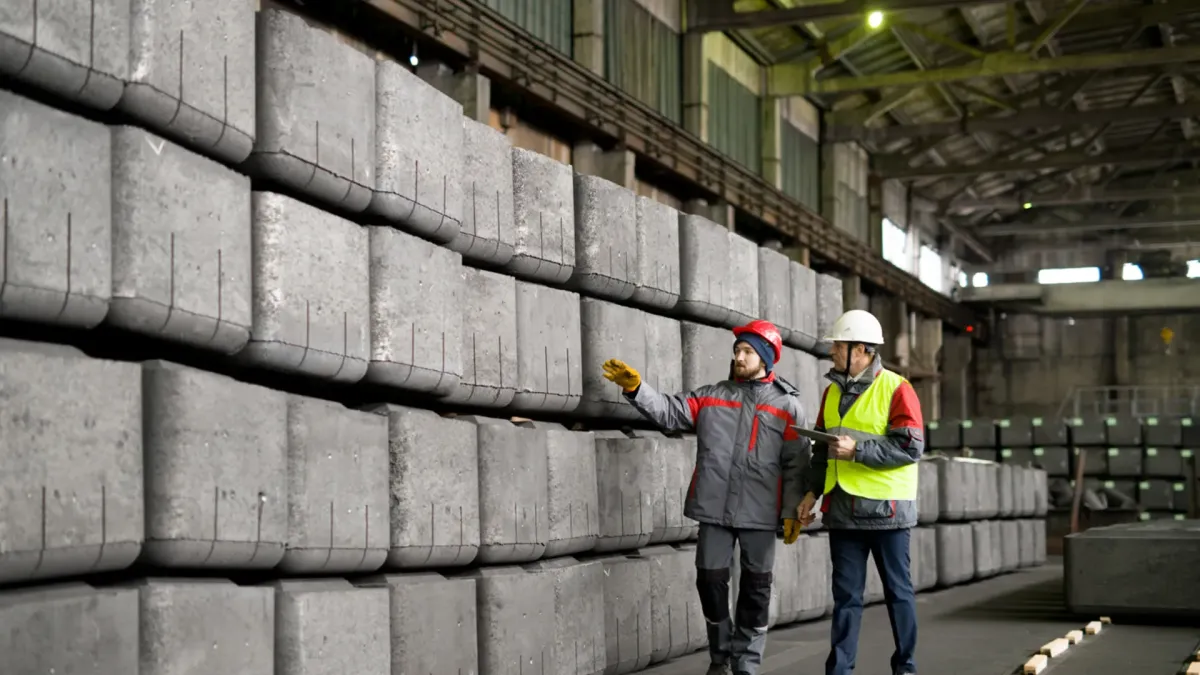
What are High-Performance Concrete Solutions? A Guide for Beginners
In an ever-evolving world of 'high-tech' construction methods, it only gets harder to find materials that suit our changing needs and withstand the test of time.
Imagine a concrete that not only boasts exceptional strength but also resists extreme weather, chemical exposure, and heavy abrasion.
That is what High-Performance Concrete (HPC) and Ultra High-Performance Concrete (UHPC)—innovations that are transforming the way we build and repair infrastructure.
Understanding the terms HPC and UPHC
High-Performance Concrete (HPC) & Ultra High-Performance Concrete (UPHC) are forms of concrete that primarily focus on better material durability and abrasion resistance.
While HPC is composed of high cement content in addition to a high dosage of Silica fumes & superplasticiser, making it high in strength and low in permeability, UPHC is composed of fine-grained sand, silica fume, steel fibres, special blends of high-strength cement, resulting in more cement grains and consequently less water per unit volume so that cement grains are much closer to each other leading to reduced porosity.
Conventional concrete contains a significant capillary porosity, while UHPC has almost no capillary pores and is highly resistant to water and ion penetration. Therefore, the durability of UHPC is much higher than conventional concrete.
Qualities that Sets UHPC Apart
UHPC is a material that has a projected 100-year life span with exceptional durability, strength, flexibility and longevity. The qualities which make its use accepted worldwide are:
Strength
UHPC has 10 times more compressive strength when compared to traditional concrete. The compressive strength of a material can be called the ability of the material to resist bending under a load. Regular concrete used in bridges has a compressive strength of 2,500 to 4,500 psi. UHPC has a compressive strength of 15,000 to 40,000 psi. Another measure of strength is Tension or Tensile Strength (ts). It is the strength of a material when you pull it. While the tensile strength of traditional concrete is 500 – 800 psi, UHPC is about 1500 psi.
Durability
The strength of UHPC is impressive, but its durability takes it to another level. Durability refers to how well a material performs in extreme conditions. For UHPC, that means resistance to freeze/thaw cycles, chloride exposure (like road salts), and abrasion—all of which are essential for long-lasting performance. In fact, UHPC is so tough, it behaves like hard rock. To test its freeze/thaw resistance, concrete prisms are submerged in water and repeatedly frozen and thawed. UHPC retained all of its material properties even after 600 cycles, proving just how durable it really is.
Chloride permeability
Chloride permeability is tested by applying a 3-percent sodium chloride solution to the surface of the concrete for 90 days. After that time, the amount of chloride ions that have moved into the concrete is measured. When tested, UHPC showed incredibly low chloride migration—less than 10% of the permeability found in regular concrete.
Abrasion resistance
Abrasion resistance is tested by using a rotating cutter to wear away the surface of the concrete over a set period of time. UHPC performs exceptionally well in this test, showing nearly double the abrasion resistance of your normal concrete.
UHPC’s Secret Weapon for Protecting Steel Reinforcements
Dams and Reservoirs
Dams and water reservoirs are constantly exposed to water and the force of ships, which wear down the concrete over time. This continuous abrasion can erode the rebar cover, causing corrosion and weakening the structure. By using field-cast or shotcrete UHPC for construction and retrofitting, these structures gain superior durability against abrasion and enhanced strength to withstand impacts from ships.
Bridges & Canals
Marine structures such as bridges, tunnels, and canals often struggle when made with traditional concrete, which doesn’t have the strength or chemical durability needed to resist exposure to chloride.
Chloride in significant amounts can damage steel reinforcements that can result in costly repairs. UHPC solves this problem by preventing chloride ions from penetrating the surface.
The dense composition of its nature creates a protective barrier that shields both the concrete and steel from the harmful effects of saltwater. Result - the structure lasts longer and requires fewer inspections and repairs, making it cost-effective in the long run.
Airports
One feature of UHPC is its exceptional resistance to extreme forms of wear. UHPC makes runways stronger and last longer. Whether you’re building a new runway or fixing an old one, it’s a smart choice. It cuts down on repairs and saves money over time. UHPC adds extra strength to the surface, helping it handle heavy traffic, bad weather, and daily wear and tear without breaking down. It also increases the load-bearing capacity, making it stronger and more durable.
Parking Decks & Structures
Whether you're preserving parking decks or retrofitting inverted tee beams, UHPC offers a durable, innovative, and effective solution that helps extend the lifespan of parking structures.
Treatment Plants
Treatment plants need advanced concrete technology to withstand abrasion, acids, sulfates, and carbonation. Thanks to its impermeability, UHPC boosts the durability and extends the lifespan of treatment structures, ensuring they perform reliably over time.
Railway Structures
A large number of our railway structures require extensive repairs. UHPC is perfect for fortifying and protecting the beams, piers, and abutments of aging railroad bridges against corrosion.
To Conclude
As construction needs grow, Ultra High-Performance Concrete (UHPC) is changing the game. It is stronger, tougher, and lasts much longer than regular concrete.
From dams and airports to marine structures and railway systems, UHPC is making a real difference. It helps buildings and structures stand strong, even in the toughest conditions.
With UHPC, infrastructure doesn’t just survive — it performs better and stays solid for years to come. With its remarkable resistance to freeze/thaw cycles, chloride exposure, and abrasion, UHPC is quickly becoming the go-to solution for high-stakes, long-term projects that can’t afford to fail.
The construction industry continues to push boundaries and embracing UHPC can help you future-proof your projects and significantly reduce long-term maintenance costs. Don't hesitate! Makeover your infrastructure with UHPC's robustness and longevity.
